“After we developed a container farm, we noted that there is a lack of small start-up systems to start with," says Anthoney Lacey, Founder and CEO of Kalliergo Micro Acre Farming. "Therefore, we decided to develop kits for every budget. People can expect a high return on their money eventually, depending on the crops and market they have available."
Cullinan, South Africa-based startup Kalliergo, which is Greek for Grow, has made feeding low-income societies with sustainable farming practices its mission.
Cost-efficient solutions
Anthoney Lacy, founder and CEO of Kalliergo became involved with food insecurity when he had been on business trips to the Seychelles and Malawi, where he was confronted with the food insecurity the countries battled with, and still do. Once he returned back to South Africa, he was set to find a cost-effective solution on how third-world countries could remedy these insecurities with affordable farming practices.
After Kalliergo was founded, Anthoney raised funding to start developing a containerized farm that is able to use natural sunlight and is not reliant on LED lighting only. Using Multiwall polycarbonate sheeting and extra reflective material to increase light availability, and adding LEDs as an additive on overcast days, reduces overall running costs and CapEx.
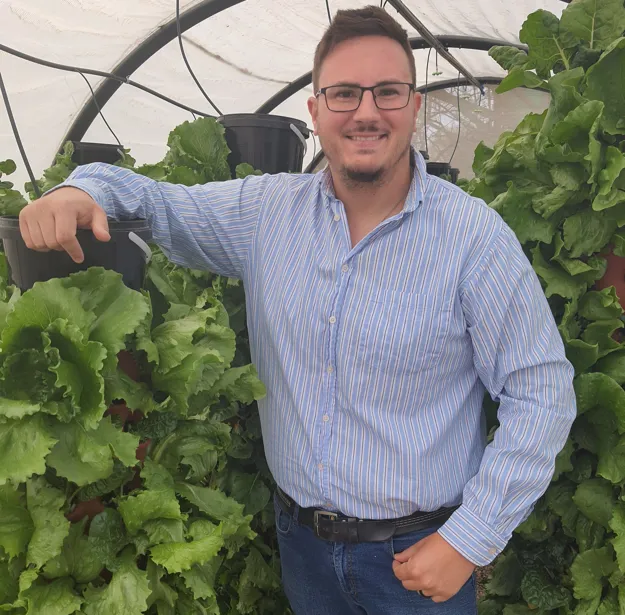
Anthoney Lacey
Given the many sun hours in Africa and countries with a similar climate, Kalliergo designed affordable greenhouses and GeoTowers, using Israeli-inspired geoponic techniques with adaptation to the harsh African conditions. Anthoney explains that the towers should be watered manually or connected to a high-placed water reservoir for watering more than one tower at a time, once or twice a day depending on weather conditions.
These kits consist of a tunnel/greenhouse and GeoTowers. “With food prices soaring, now is the best time to get into farming. With our systems, you're able to start small and build yourself up," Anthoney noted.
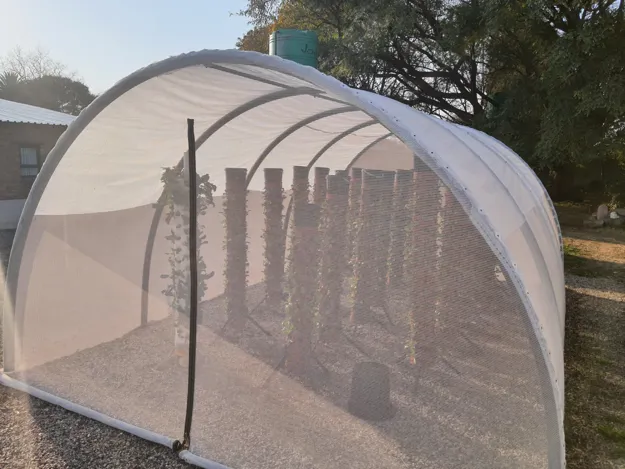
The tunnels
Seychelles 3D concept
Kalliergo was approached by a businessman in Seychelles on a concept to grow vegetables in his cellar with minimal resources required, using the same techniques and methods used with the GeoTowers, tunnels, and containerized farm pilot.
“With our pilot farm in Cullinan we had delivered phenomenal results, so much so that it convinced the spokesperson in Seychelles to reach out to us,” he claimed. Kalliergo designed a 3D model with the help of 3asy Draft for a cellar farm for the Seychelles that could help them to supply a fair amount of greens and herbs per month.
Natural light is allowed via the cellar and light reflected material was used for the walls. This cut the power consumption costs drastically. LEDs, in combination with reflective material on the walls to distribute lighting equally in the design, are also running as a substitute. "The design was received rather well and was noticed by many."
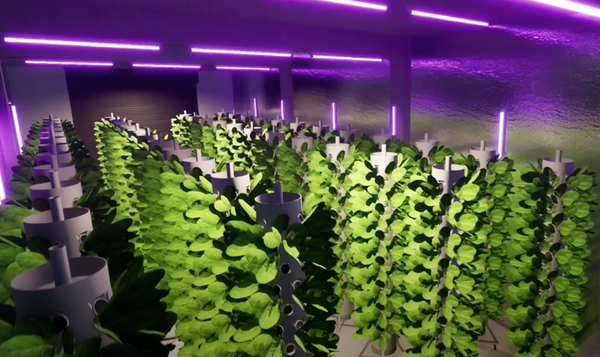
“Soon after this concept was designed, many countries started to pick up on us ” he noted.
Kalliergo’s Towers have been shipped to New Plymouth, New Zealand, and has been doing well with their clients, who are now growing a number of different crops and showcasing the versatility of the GeoTowers.
“We’ve had clients come from Swaziland to view what we are doing, and also a number of clients from Mozambique, Namibia, Zambia, and Botswana that would like to get involved with our systems,” Anthoney noted.
“The local market has an appetite for herbs, fresh leafy greens, and quality produce, so we’ve been focusing on that mostly,” Anthoney affirmed. "The pilot/demo site has been created for clients to come and see what we do and what we have created, to give people the opportunity to taste, see, smell, feel, and experience what we have accomplished."
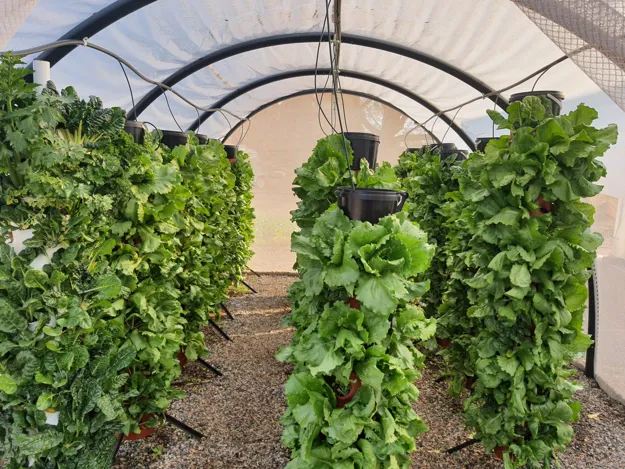
Independent product
South Africa has major power shedding and thus power cuts happen without notice or warning, meaning you have to run generators or alternative energy sources on the fly, explains Anthoney. "There are times that there is no power, so when running a hydroponic farm it’s necessary to have a generator or solar back for vertical farming systems. Power Failures can result in crop losses and also have a high energy cost."
However, with Kalliergo’s GeoTowers, there is no need for electricity; it needs running water only. The water is placed in a reservoir on top and is directed to a feeding tube in the center. There is, however, the possibility to automate the towers. According to Anthoney, it would be best to have a solar backup system to make sure there is no downtime.
108 plants can be housed in a 2,3-meter high GeoTower, and a 1,5-meter GeoTower, can house 60 plants like herbs and spinach. The substrate, towers, seeds, and medium are supplied by Kalliergo. There are many crops that growers can choose from, such as leafy greens, vegetables, and herbs.
Kalliergo is currently experimenting with tomatoes and peppers, and the results with tomatoes have shown a positive effect on the quality. The yield is still to be determined.
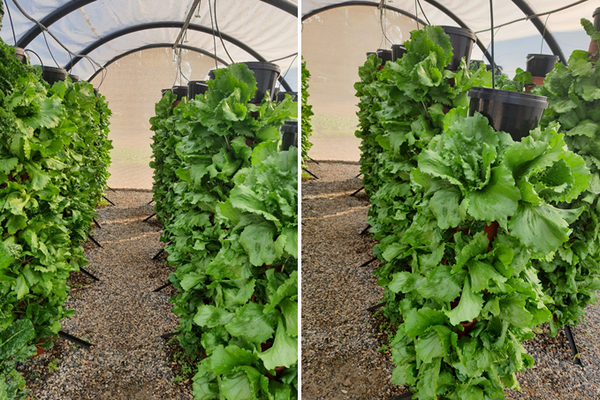
Flexibility
“We can offer low costs in terms of labor, cost inputs, and output,” Anthoney adds. "As less labor is needed, we can cut costs on that side, as well as with the diversity of crops the system allows to grow so growers aren’t bound to one circulating system at the time,” Anthoney adds.
In a geoponic setup, nutrients go into the substrate and the plants are kept in their original environment, utilizing nutrients and minerals in their natural form, but in a hydroponic system, where the nutrients are only water-based. For us, we were able to grow spinach and lettuce in one tower, and both of them came out successful. You’re not limited to having one specific crop only. You don’t need a massive system to start growing. The kicker of this setup is the running cost because you only need water, nutrients, sunlight, and minimal labor."
 For more information:
For more information:
Anthoney Lacy, Founder
[email protected]
Kalliergo Micro Acre Farming
www.kalliergofarming.com
